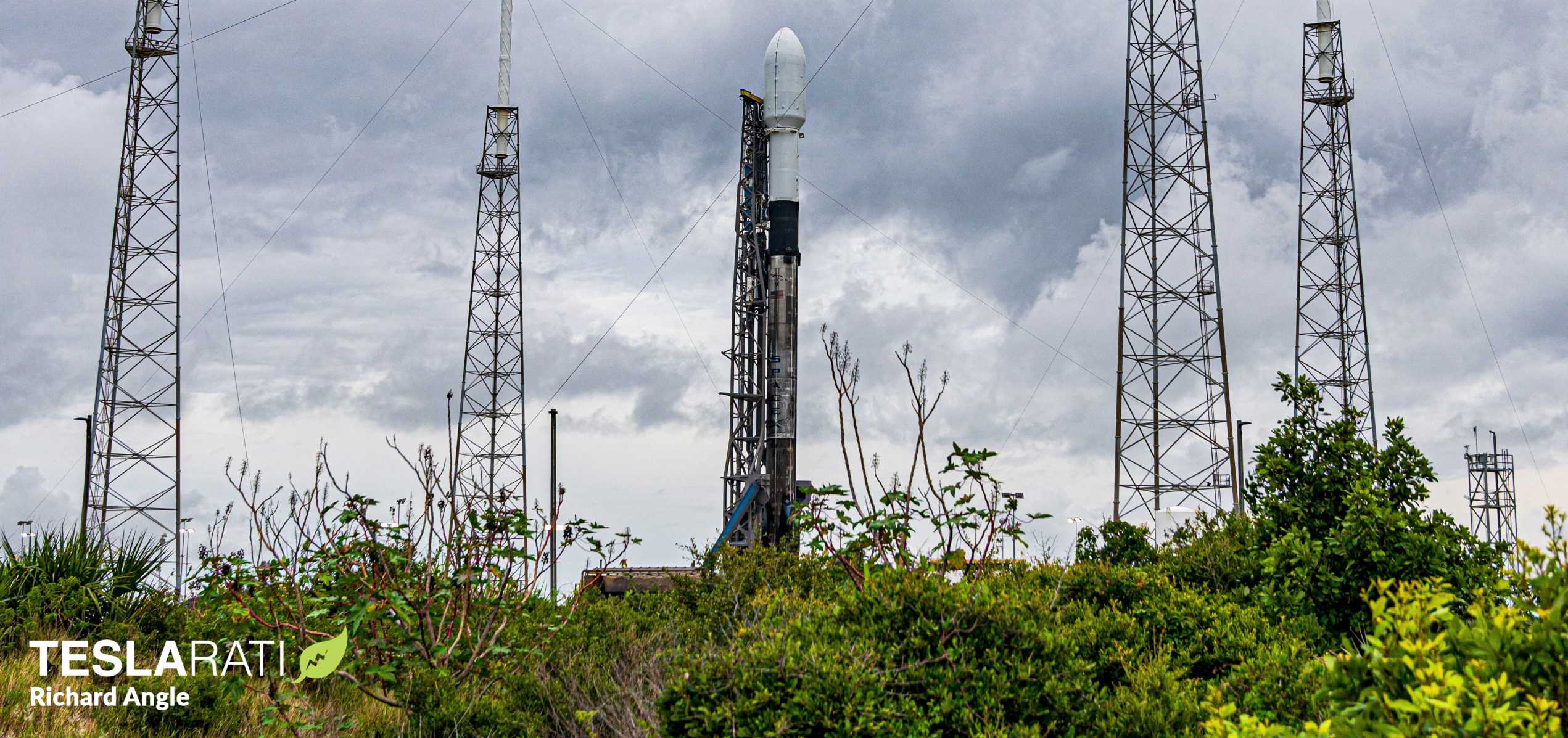
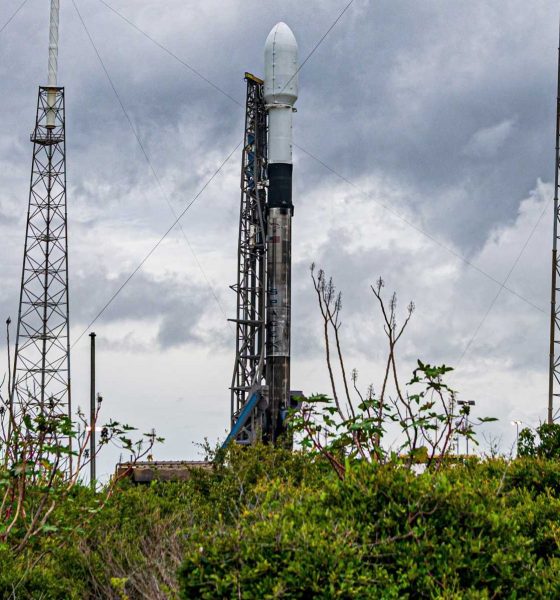
News
SpaceX’s ninth Starlink launch gets a boost from first all-women weather crew
SpaceX’s second Starlink launch of the month is currently tracking towards a June 13th liftoff from Cape Canaveral, Florida.
In order for a rocket launch to get off the ground, however, a perfect mix of ingredients must come together. One of the most crucial ingredients is the weather. Behind the scenes, the U.S. Space Force’s 45th Weather Squadron of the 45th Space Wing Operations Group – based out of Patrick Air Force Base – works diligently to monitor and predict weather conditions leading up to and at the time of liftoff. Every rocket launch that lifts off from Kennedy Space Center or Cape Canaveral Air Force Station utilizes the weather monitoring services provided by the 45th Weather Squadron and SpaceX – the most prolific US launch company is – no different.
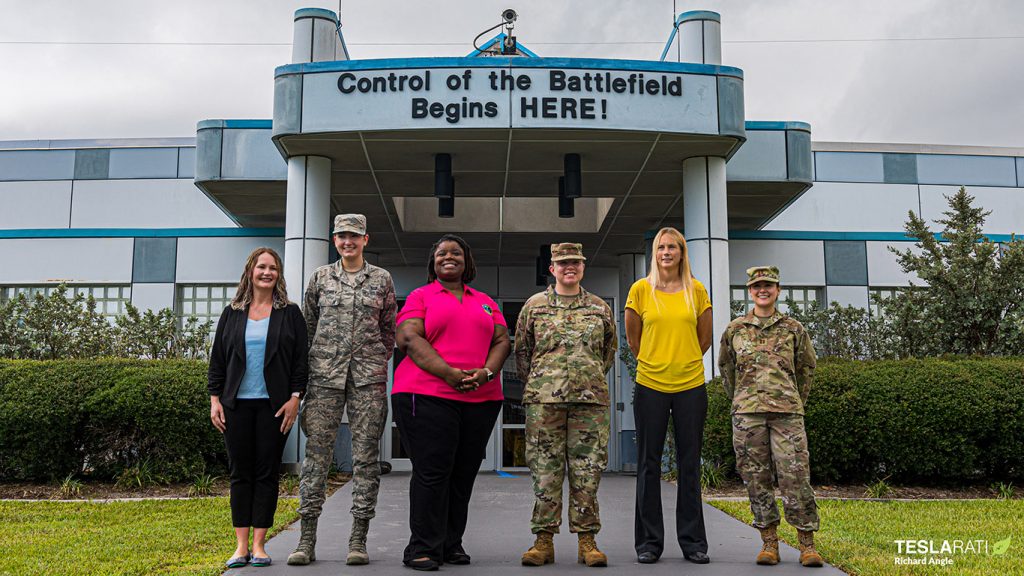
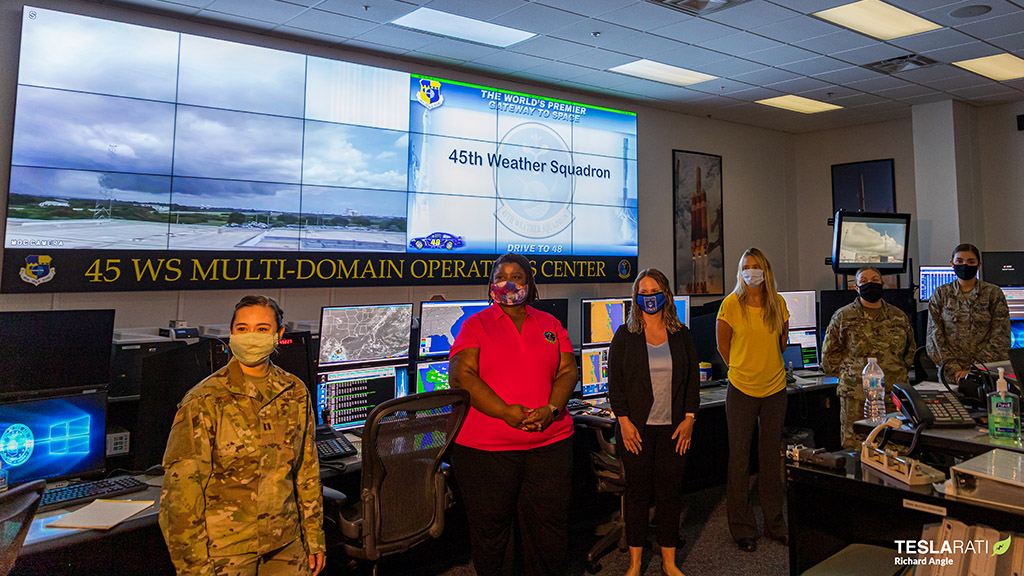
For SpaceX’s upcoming Starlink V1 L8 Rideshare Program mission, the entire weather team on console is female, a first in program history. The team is made up of six women all responsible for specific roles that must coordinate and work cohesively to monitor the weather and determine when it is safe to launch the Falcon 9.
The diverse team is comprised of military personnel and civilian weather officers. It is overseen by Maj Emily Graves, Launch Weather Commander, and orchestrated by Capt. Nancy Zimmerman, Launch Weather Director. A Lead Launch Weather Officer, Arlena Moses, coordinates information between the launch customer, SpaceX, and the 45th while three other members constantly monitor and decipher mountains of weather data.
Airman 1st class Hannah Mulcahey serves as Duty Forecaster and Jessica Williams serves as Radar Launch Weather Officer. Williams is responsible for monitoring information produced by a series of systems every three minutes. She monitors radar data for the amount of precipitation, clouds that are present in the area, and the thickness of the clouds among other things. This information is used to determine whether or not the rocket’s flight path is safe for the duration of the mission. Thick clouds can be an indicator of an unstable atmosphere capable of producing electricity – either naturally as cloud produced lightning or lightning produced by a rocket thrusting through the unstable atmosphere called triggered lightning.
Should radar information be too ambiguous or overexaggerated, the Reconnaissance Launch Weather Officer, Melody Lovin, coordinates the mission with a reconnaissance aircraft known as Weather One. For SpaceX’s upcoming launch, Weather One will only be activated if there is going to be bad weather present for launch, a small possibility if the launch date slips. Other launch customers such as NASA or United Launch Alliance will sometimes have Weather One in the air on standby throughout the duration of the countdown to launch dependent on mission constraints.
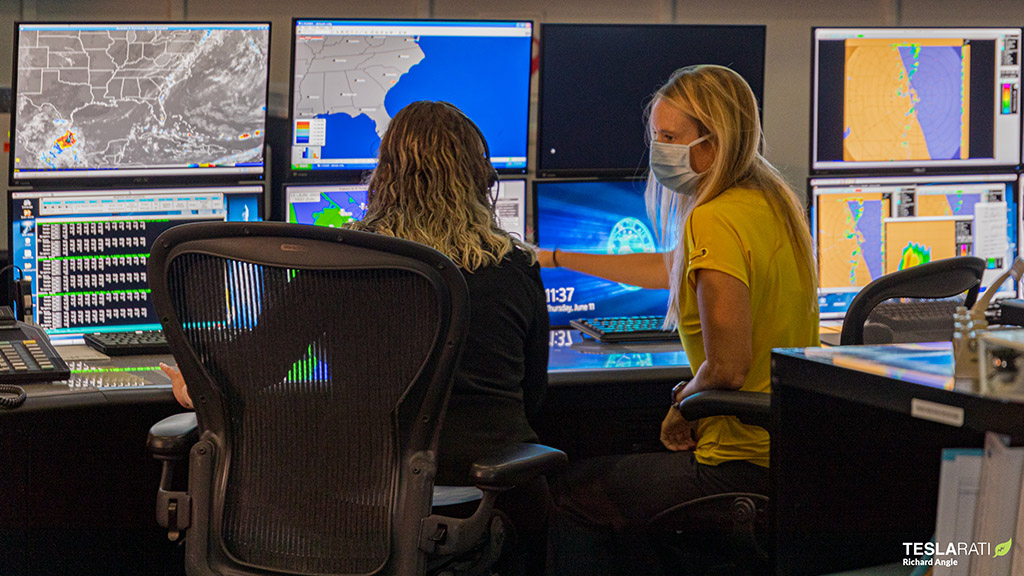
When Launch Weather Director, Capt Nancy Zimmerman, was asked during a media teleconference about how this historical assignment came about, she stated that it was pure coincidence. “It was happenstance. The flight commander of space lift, my supervisor, actually created a team, as he always does, and was like ‘Huh, this is actually an all-female team. Have we ever done this?’ And looking back through the database, you know, it hasn’t been done and he was like ‘Well, should we do this?’ and I said ‘Yes, let’s do it.’” Zimmerman said .
A primary factor enabling an all-female led launch weather team is simply that the workforce of the 45th Weather Squadron is now comprised of more females than ever before. According to Lovin, “We simply have more women on the team. Before we only had one and that was from the year 2000 to 2018 and 2018 came around and a lot of resident launch weather officers left and they also decided to expand the unit.” She went on to state that the massive uptick in launches from the Cape Canaveral Air Force Station and Kennedy Space Center was a driving factor of the weather unit expansion, “when they expanded the unit they hired three more women, so that means we have six women on the team.”
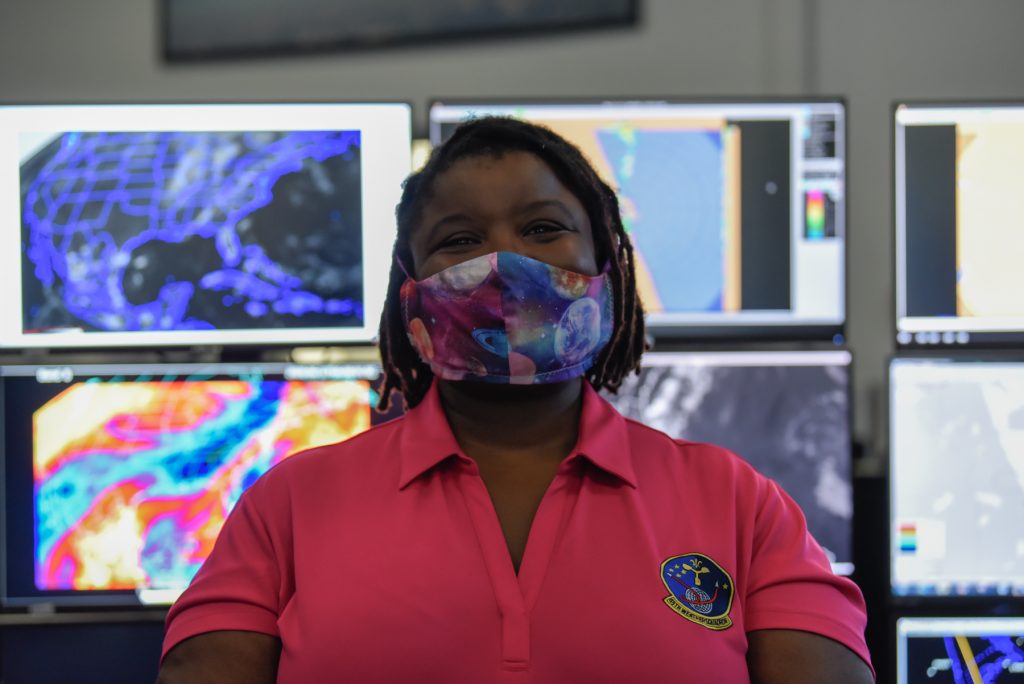
The personnel of the 45th Weather Squadron work day in and day out to monitor and forecast weather conditions ensuring safe air and space operation all year round. When it comes to rocket launches, watching the weather begins early and is done frequently. Weather patterns in central Florida can change rapidly causing a rocket launch attempt to be scrubbed completely, which is what occurred with SpaceX’s first attempt to launch NASA astronauts Bob Behnken and Doug Hurley to the International Space Station.
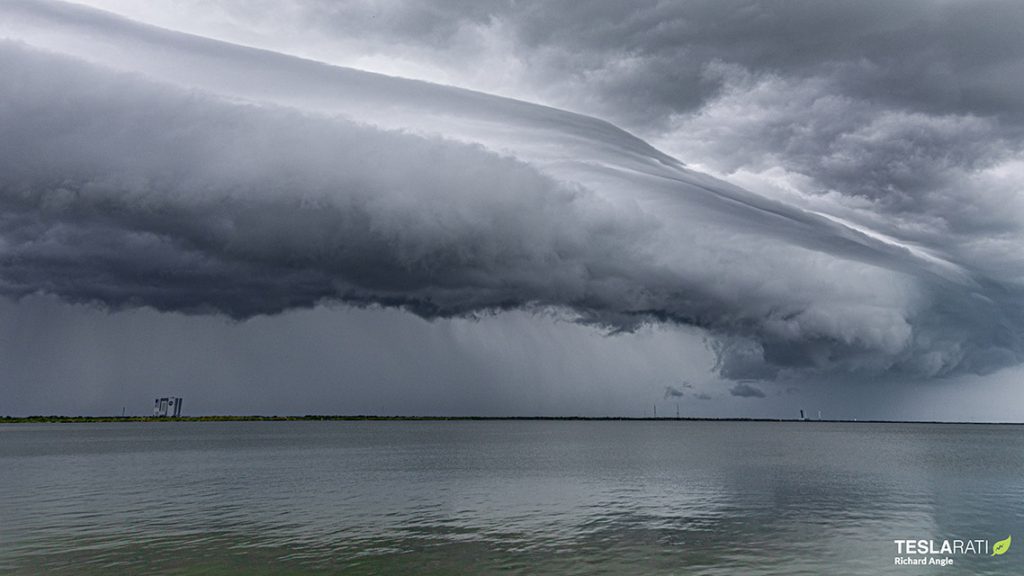
Understanding and tracking developing weather patterns of central Florida allows the 45th Weather Squadron to create launch mission execution forecasts that outline a possibility of violation (POV) of specific launch weather constraints ahead of a launch attempt and any planned backup attempts. These comprehensive forecasts cover everything from systems like frontal boundaries that influence area weather to the type of clouds expected at the time of launch. The forecasts are put together based on a series of ten Lightning Launch Commit Criteria rules and a series of user-defined constraint rules that are specific to each mission and launch vehicle such as SpaceX’s Falcon 9 or United Launch Alliance’s Atlas V for example.
The ten lightning launch commit criteria rules have been in place since the 1980s when an Atlas-Centaur rocket was ultimately lost due to triggered lightning. The rocket launched into a highly unstable and electrified atmosphere full of thick clouds creating the conditions necessary to trigger a lightning strike of the vehicle. It lost its navigation system and began to dangerously veer from its course. It was then destroyed in-flight by launch teams.
Given the high degree of uncertainty of Florida weather, a well-versed team of highly trained weather professionals is a necessary piece of the puzzle that is rocket launching. For the first time, that team is made up of incredibly inspiring females that undoubtedly will make the correct GO/NO GO call on launch day.
For SpaceX’s first Starlink SmallSat Rideshare Program mission, targeted to launch no earlier than (NET) Saturday, June 13 at 5:21 a.m. EDT (09:21 UTC), the 45th Weather Squadron team predicts a 30% chance of violation – meaning that weather is 70% GO for launch. The primary concern is a bank of cumulus clouds expected to be in the area. You can view the full launch mission execution forecast on the 45th Weather Squadron’s website.
Check out Teslarati’s newsletters for prompt updates, on-the-ground perspectives, and unique glimpses of SpaceX’s rocket launch and recovery processes.

Elon Musk
Elon Musk’s warning to legacy automakers: Tesla FSD licensing snub echoes EV dismissal
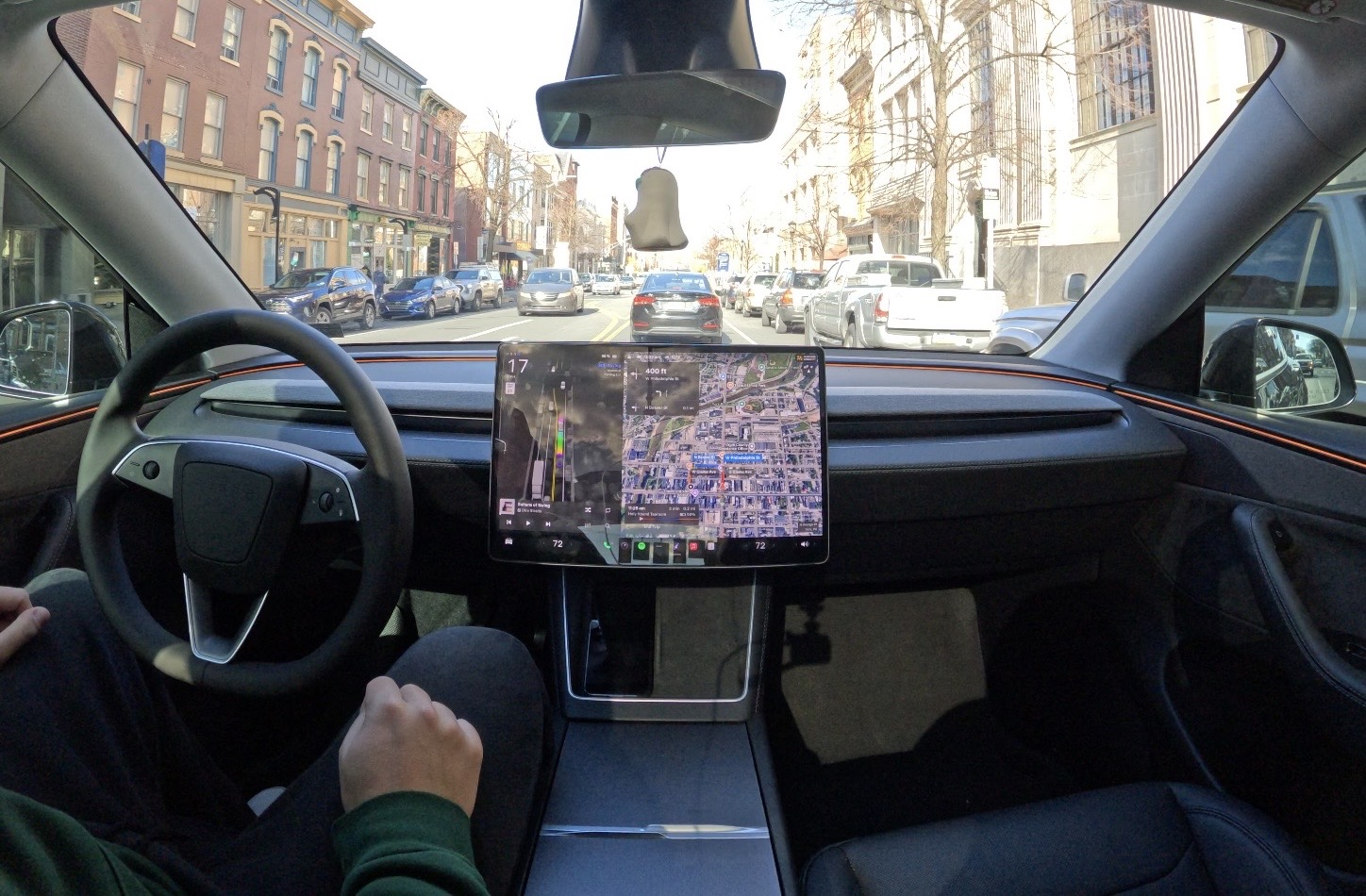
Elon Musk said in late November that he’s “tried to warn” legacy automakers and “even offered to license Tesla Full Self-Driving, but they don’t want it,” expressing frustration with companies that refuse to adopt the company’s suite, which will eventually be autonomous.
Tesla has long established itself as the leader in self-driving technology, especially in the United States. Although there are formidable competitors, Tesla’s FSD suite is the most robust and is not limited to certain areas or roadways. It operates anywhere and everywhere.
The company’s current position as the leader in self-driving tech is being ignored by legacy automakers, a parallel to what Tesla’s position was with EV development over a decade ago, which was also ignored by competitors.
The reluctance mirrors how legacy automakers initially dismissed EVs, only to scramble in catch-up mode years later–a pattern that highlights their historical underestimation of disruptive innovations from Tesla.
Elon Musk’s Self-Driving Licensing Attempts
Musk and Tesla have tried to push Full Self-Driving to other car companies, with no true suitors, despite ongoing conversations for years. Tesla’s FSD is aiming to become more robust through comprehensive data collection and a larger fleet, something the company has tried to establish through a subscription program, free trials, and other strategies.
Tesla CEO Elon Musk sends rivals dire warning about Full Self-Driving
However, competing companies have not wanted to license FSD for a handful of speculative reasons: competitive pride, regulatory concerns, high costs, or preference for in-house development.
Déjà vu All Over Again
Tesla tried to portray the importance of EVs long ago, as in the 2010s, executives from companies like Ford and GM downplayed the importance of sustainable powertrains as niche or unprofitable.
Musk once said in a 2014 interview that rivals woke up to electric powertrains when the Model S started to disrupt things and gained some market share. Things got really serious upon the launch of the Model 3 in 2017, as a mass-market vehicle was what Tesla was missing from its lineup.
This caused legacy companies to truly wake up; they were losing market share to Tesla’s new and exciting tech that offered less maintenance, a fresh take on passenger auto, and other advantages. They were late to the party, and although they have all launched vehicles of their own, they still lag in two major areas: sales and infrastructure, leaning on Tesla for the latter.
I’ve tried to warn them and even offered to license Tesla FSD, but they don’t want it! Crazy …
When legacy auto does occasionally reach out, they tepidly discuss implementing FSD for a tiny program in 5 years with unworkable requirements for Tesla, so pointless. 🤷♂️
🦕 🦕
— Elon Musk (@elonmusk) November 24, 2025
Musk’s past warnings have been plentiful. In 2017, he responded to critics who stated Tesla was chasing subsidies. He responded, “Few people know that we started Tesla when GM forcibly recalled all electric cars from customers in 2003 and then crushed them in a junkyard,” adding that “they would be doing nothing” on EVs without Tesla’s efforts.
Companies laughed off Tesla’s prowess with EVs, only to realize they had made a grave mistake later on.
It looks to be happening once again.
A Pattern of Underestimation
Both EVs and self-driving tech represent major paradigm shifts that legacy players view as threats to their established business models; it’s hard to change. However, these early push-aways from new tech only result in reactive strategies later on, usually resulting in what pains they are facing now.
Ford is scaling back its EV efforts, and GM’s projects are hurting. Although they both have in-house self-driving projects, they are falling well behind the progress of Tesla and even other competitors.
It is getting to a point where short-term risk will become a long-term setback, and they may have to rely on a company to pull them out of a tough situation later on, just as it did with Tesla and EV charging infrastructure.
Tesla has continued to innovate, while legacy automakers have lagged behind, and it has cost them dearly.
Implications and Future Outlook
Moving forward, Tesla’s progress will continue to accelerate, while a dismissive attitude by other companies will continue to penalize them, especially as time goes on. Falling further behind in self-driving could eventually lead to market share erosion, as autonomy could be a crucial part of vehicle marketing within the next few years.
Eventually, companies could be forced into joint partnerships as economic pressures mount. Some companies did this with EVs, but it has not resulted in very much.
Self-driving efforts are not only a strength for companies themselves, but they also contribute to other things, like affordability and safety.
Tesla has exhibited data that specifically shows its self-driving tech is safer than human drivers, most recently by a considerable margin. This would help with eliminating accidents and making roads safer.
Tesla’s new Safety Report shows Autopilot is nine times safer than humans
Additionally, competition in the market is a good thing, as it drives costs down and helps innovation continue on an upward trend.
Conclusion
The parallels are unmistakable: a decade ago, legacy automakers laughed off electric vehicles as toys for tree-huggers, crushed their own EV programs, and bet everything on the internal-combustion status quo–only to watch Tesla redefine the industry while they scrambled for billions in catch-up capital.
Today, the same companies are turning down repeated offers to license Tesla’s Full Self-Driving technology, insisting they can build better autonomy in-house, even as their own programs stumble through recalls, layoffs, and missed milestones. History is not merely rhyming; it is repeating almost note-for-note.
Elon Musk has spent twenty years warning that the auto industry’s bureaucratic inertia and short-term thinking will leave it stranded on the wrong side of technological revolutions. The question is no longer whether Tesla is ahead–it is whether the giants of Detroit, Stuttgart, and Toyota will finally listen before the next wave leaves them watching another leader pull away in the rear-view mirror.
This time, the stakes are not just market share; they are the very definition of what a car will be in the decades ahead.
News
Waymo driverless taxi drives directly into active LAPD standoff
No injuries occurred, and the passengers inside the vehicle were safely transported to their destination, as per a Waymo representative.

A video posted on social media has shown an occupied Waymo driverless taxi driving directly into the middle of an active LAPD standoff in downtown Los Angeles.
As could be seen in the short video, which was initially posted on Instagram by user Alex Choi, a Waymo driverless taxi drove directly into the middle of an active LAPD standoff in downtown Los Angeles.
The driverless taxi made an unprotected left turn despite what appeared to be a red light, briefly entering a police perimeter. At the time, officers seemed to be giving commands to a prone suspect on the ground, who looked quite surprised at the sudden presence of the driverless vehicle.
People on the sidewalk, including the person who was filming the video, could be heard chuckling at the Waymo’s strange behavior.
The Waymo reportedly cleared the area within seconds. No injuries occurred, and the passengers inside the vehicle were safely transported to their destination, as per a Waymo representative. Still, the video spread across social media, with numerous netizens poking fun at the gaffe.
Others also pointed out that such a gaffe would have resulted in widespread controversy had the vehicle involved been a Tesla on FSD. Tesla is constantly under scrutiny, with TSLA shorts and similar groups actively trying to put down the company’s FSD program.
A Tesla on FSD or Robotaxi accidentally driving into an active police standoff would likely cause lawsuits, nonstop media coverage, and calls for a worldwide ban, at the least.
This was one of the reasons why even minor traffic infractions committed by the company’s Robotaxis during their initial rollout in Austin received nationwide media attention. This particular Waymo incident, however, will likely not receive as much coverage.
News
Tesla Model Y demand in China is through the roof, new delivery dates show
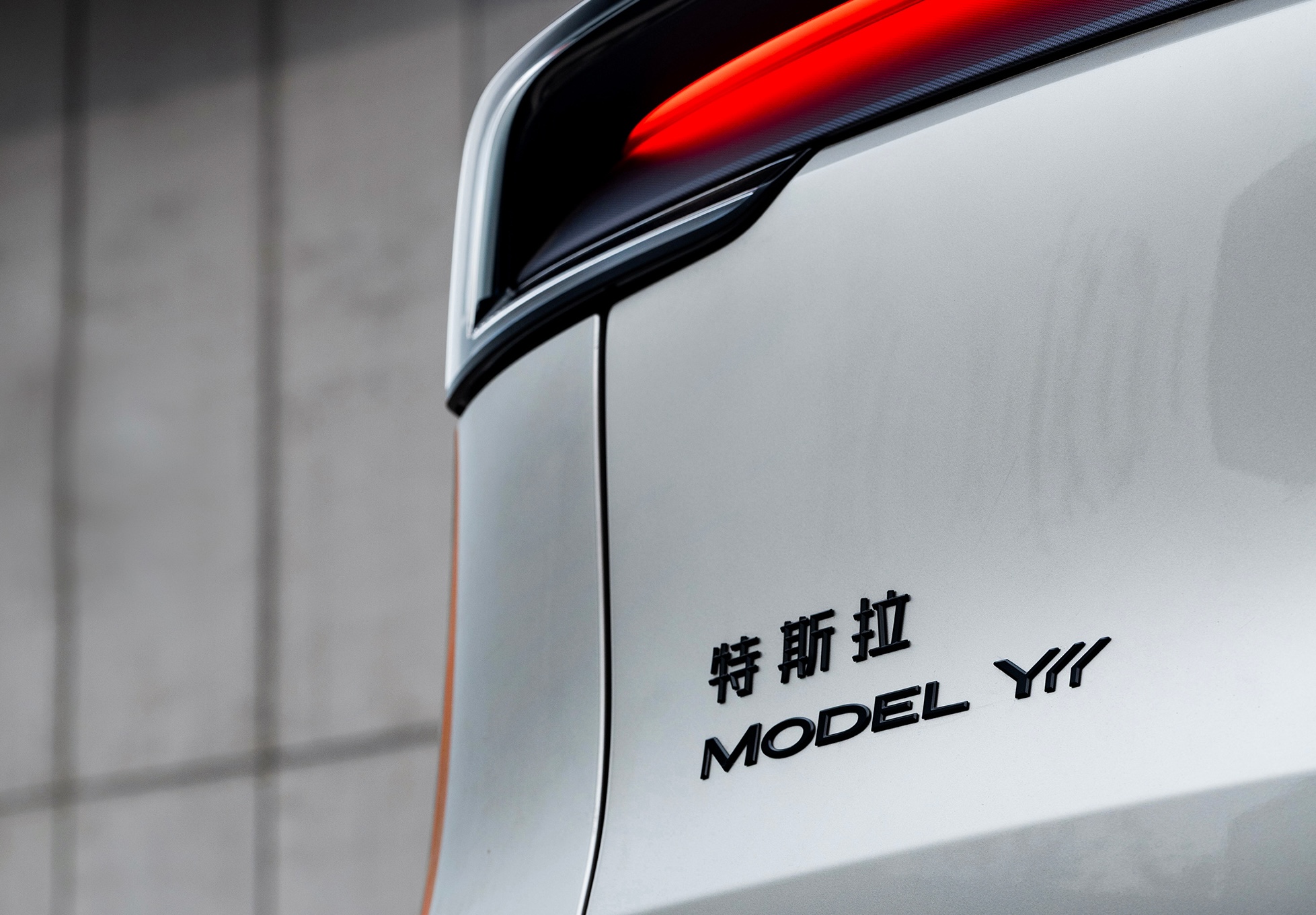
Tesla Model Y demand in China is through the roof, and new delivery dates show the company has already sold out its allocation of the all-electric crossover for 2025.
The Model Y has been the most popular vehicle in the world in both of the last two years, outpacing incredibly popular vehicles like the Toyota RAV 4. In China, the EV market is substantially more saturated, with more competitors than in any other market.
However, Tesla has been kind to the Chinese market, as it has launched trim levels for the Model Y in the country that are not available anywhere else. Demand has been strong for the Model Y in China; it ranks in the top 5 of all EVs in the country, trailing the BYD Seagull, Wuling Hongguang Mini EV, and the Geely Galaxy Xingyuan.
The other three models ahead of the Model Y are priced substantially lower.
Tesla is still dealing with strong demand for the Model Y, and the company is now pushing delivery dates to early 2026, meaning the vehicle is sold out for the year:
NEWS: New orders for all four Tesla Model Y trims in China are now officially sold out for 2025, as the factory’s remaining production capacity for the year has been fully allocated.
Estimated delivery dates for new orders now show January-February 2026. pic.twitter.com/Dfnu7yY58N
— Sawyer Merritt (@SawyerMerritt) December 1, 2025
Tesla experienced a 9.9 percent year-over-year rise in its China-made EV sales for November, meaning there is some serious potential for the automaker moving into next year despite increased competition.
There have been a lot of questions surrounding how Tesla would perform globally with more competition, but it seems to have a good grasp of various markets because of its vehicles, its charging infrastructure, and its Full Self-Driving (FSD) suite, which has been expanding to more countries as of late.
Tesla Model Y is still China’s best-selling premium EV through October
Tesla holds a dominating lead in the United States with EV registrations, and performs incredibly well in several European countries.
With demand in China looking strong, it will be interesting to see how the company ends the year in terms of global deliveries.









